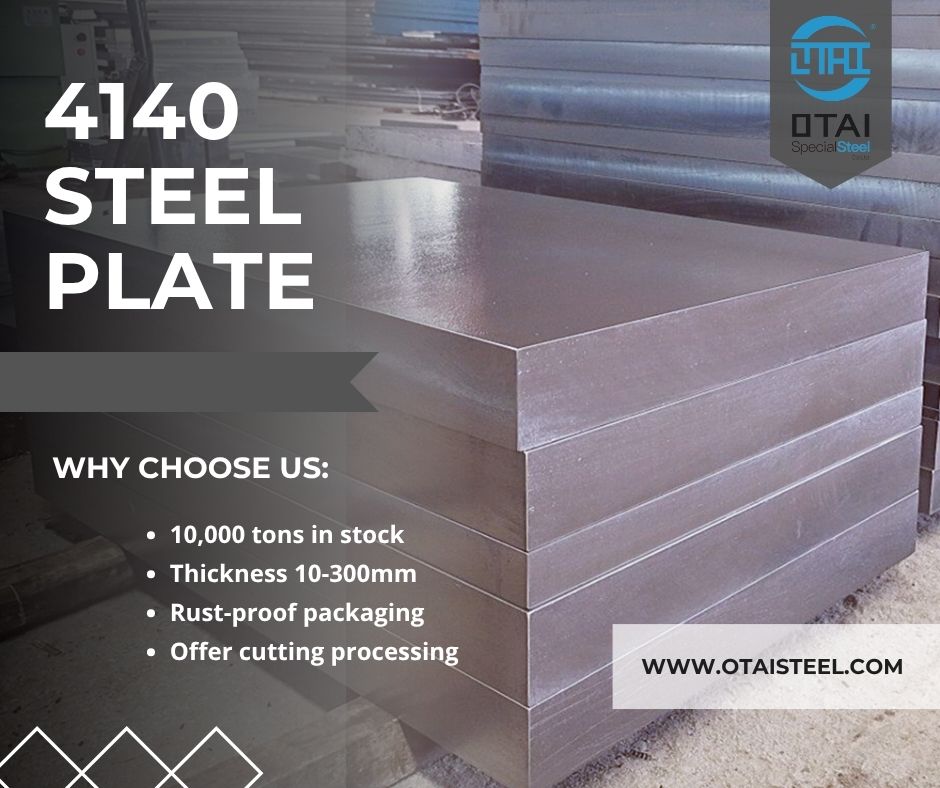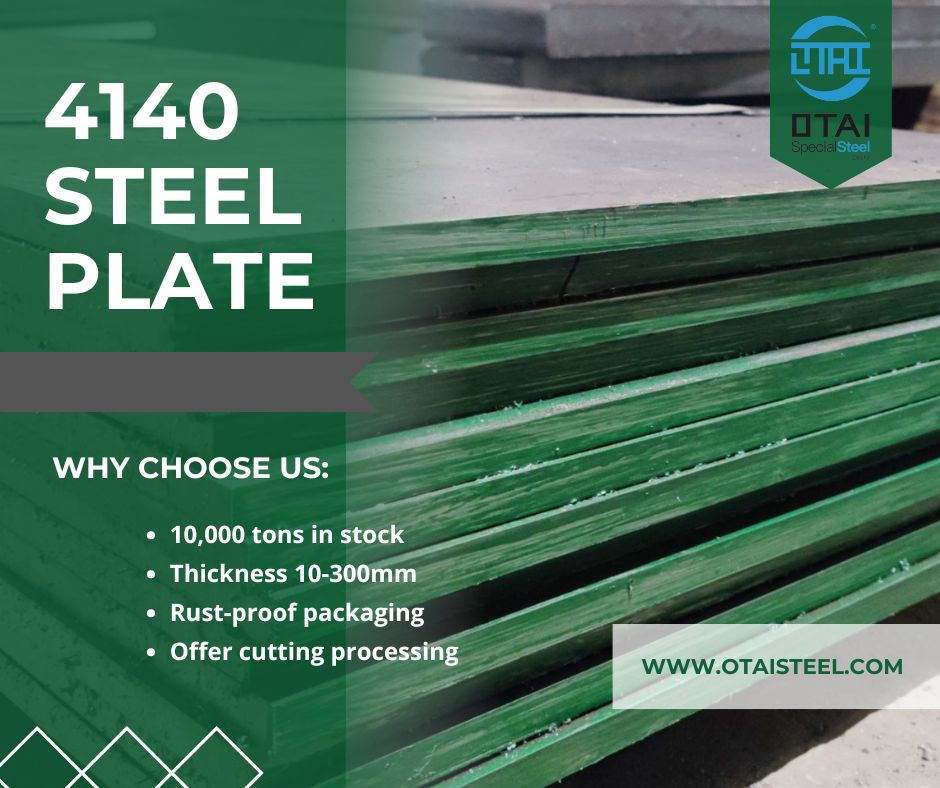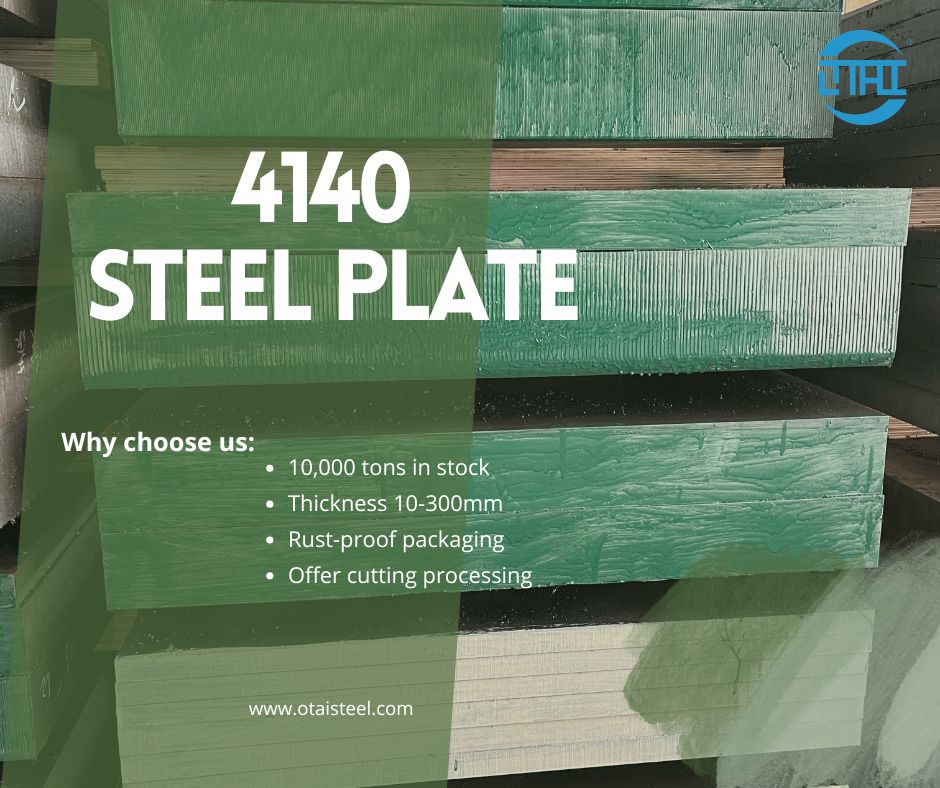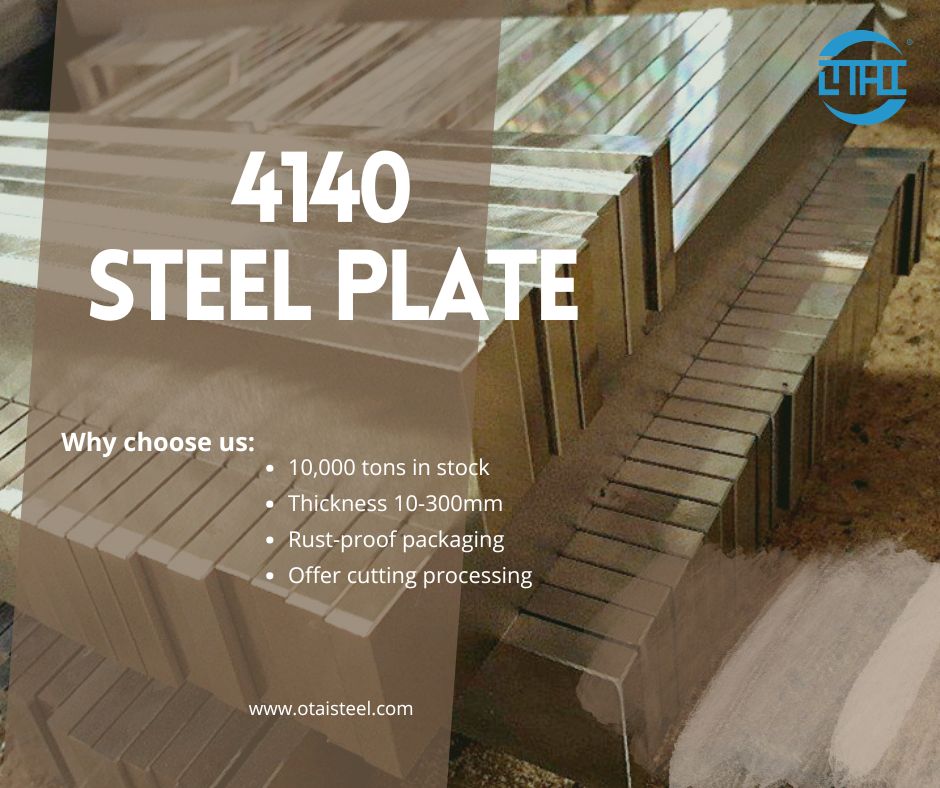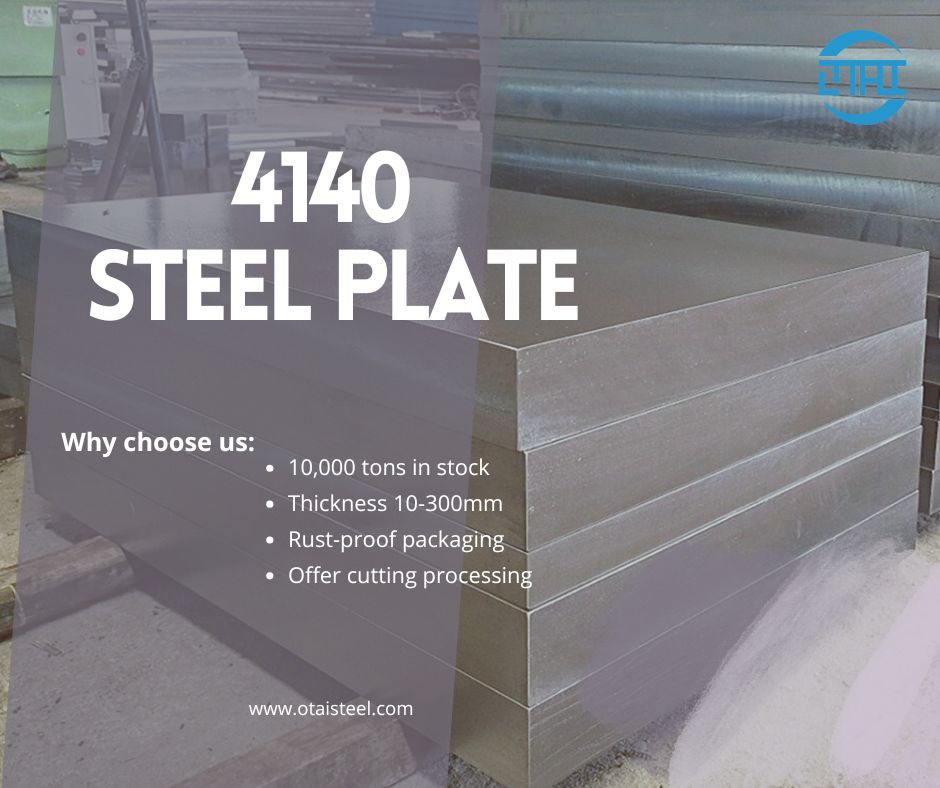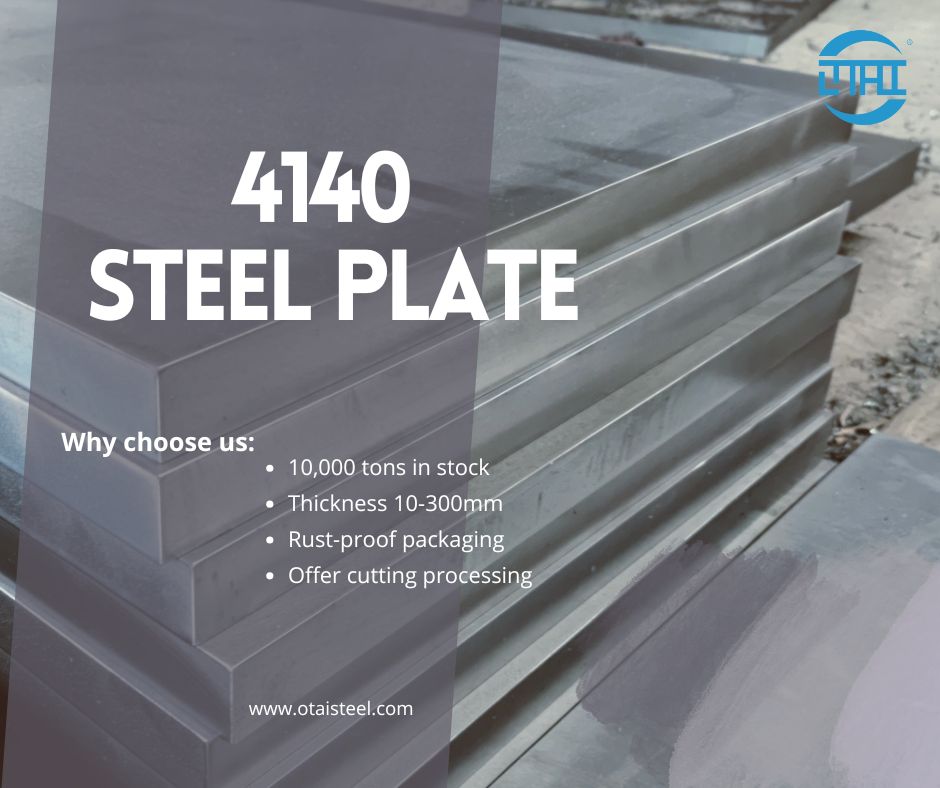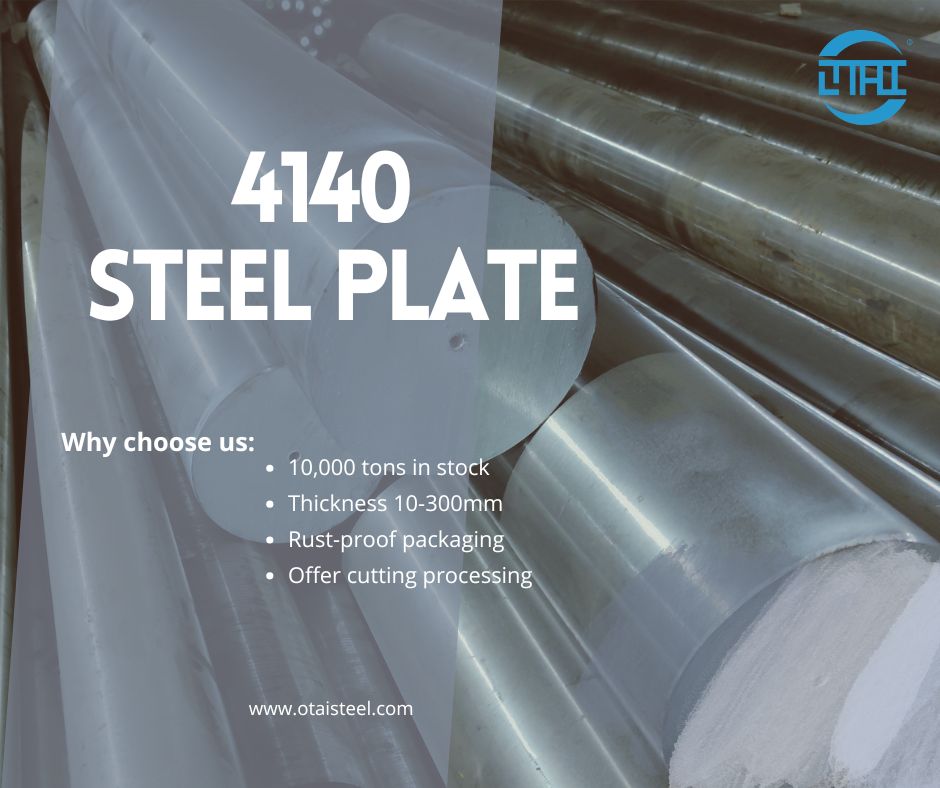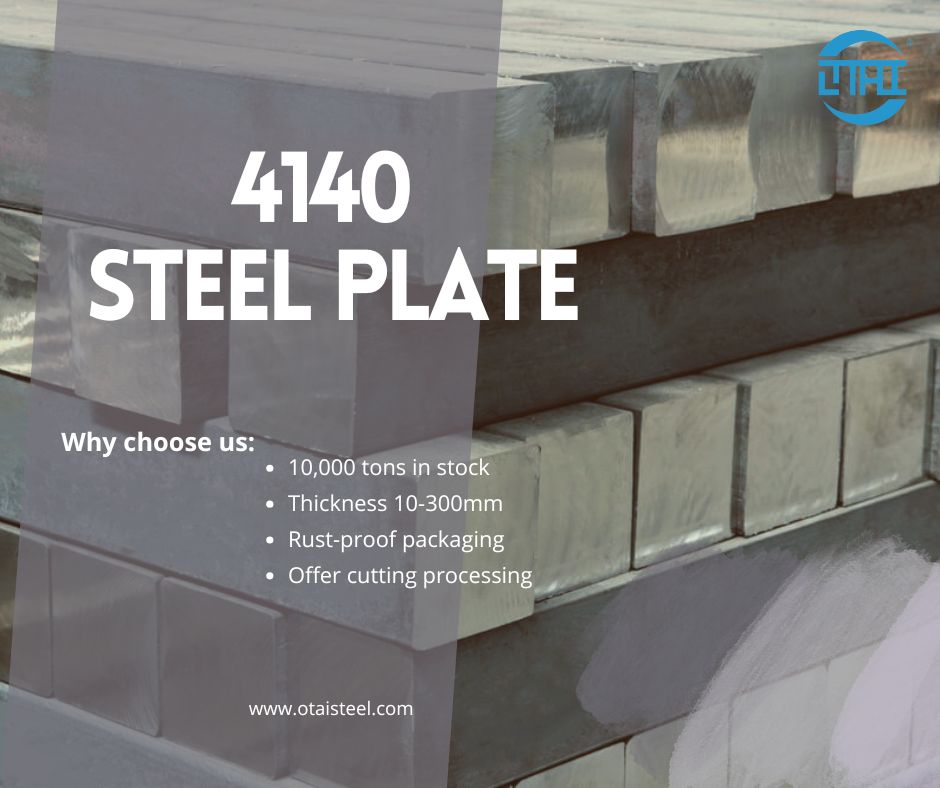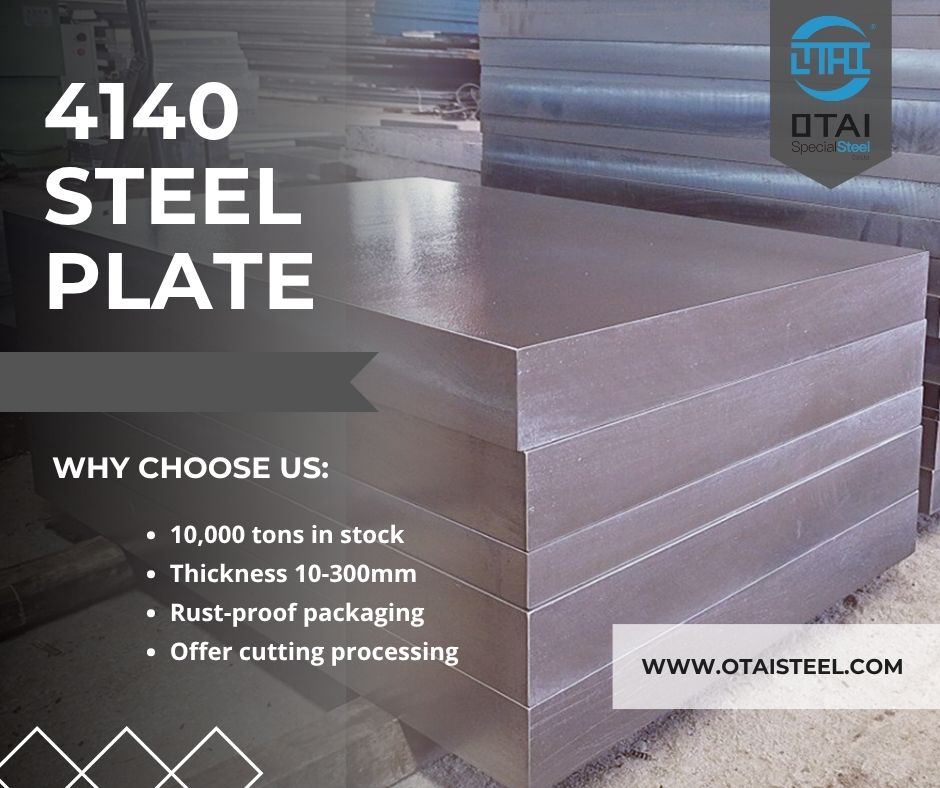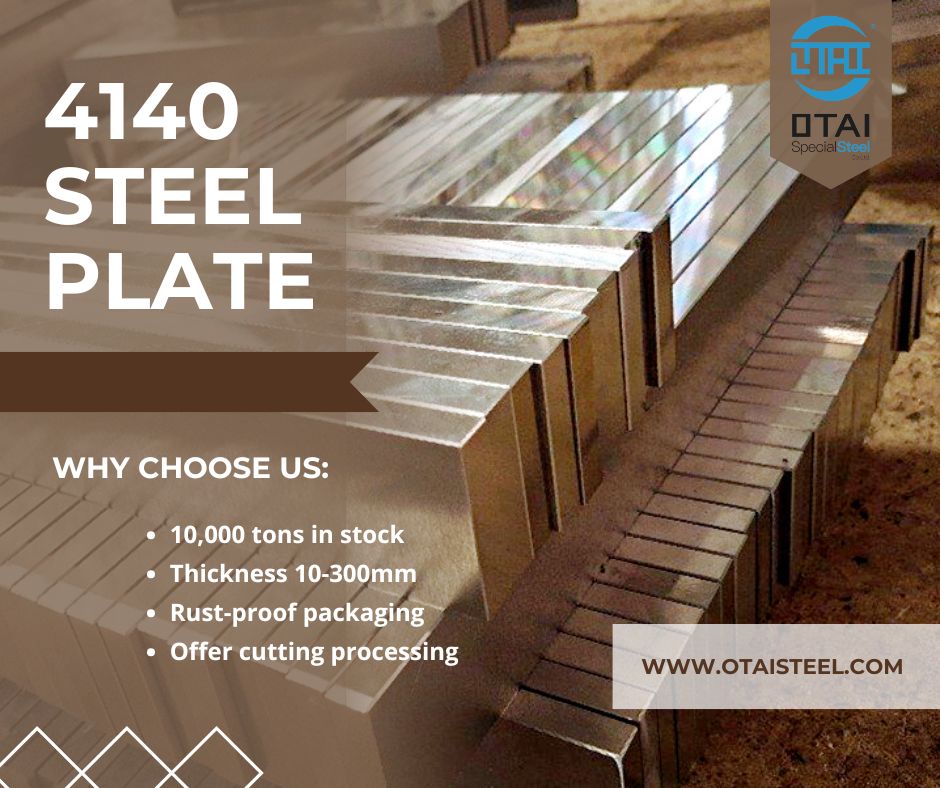
4140 tool steel plate stands as one of the most commonly used materials in industrial and manufacturing applications. This chromium-molybdenum alloy steel offers a unique combination of strength, toughness, and wear resistance, making it ideal for demanding tasks. Whether used for tool manufacturing, machinery components, or heavy-duty applications, 4140 steel plate delivers exceptional performance.
In this article, we will explore the key properties, uses, and advantages of 4140 tool plate and why it’s a popular choice across industries.
🧪 What is 4140 Tool Steel Plate?
4140 steel plate is an alloy steel that contains chromium (0.80% to 1.10%) and molybdenum (0.15% to 0.25%), elements that enhance its hardness, strength, and toughness. These properties make it perfect for high-stress applications where resistance to wear and fatigue are critical.
4140 steel comes in various conditions, including annealed, normalized, and quenched and tempered, depending on the required strength and hardness. The steel is typically available in thicknesses ranging from 1/4 inch to 6 inches.
🧬 Key Properties of 4140 Tool Steel Plate
4140 tool steel plate has several important properties that make it stand out in industrial applications. These include:
| Property | 4140 Tool Steel Plate |
|---|---|
| Tensile Strength | 95,000 – 110,000 PSI |
| Yield Strength | 60,000 – 80,000 PSI |
| Hardness | 28-32 HRC (varies with heat treatment) |
| Impact Toughness | High resistance to shock and vibration |
| Machinability | Good (especially in the annealed state) |
| Weldability | Fair (requires preheating for thick sections) |
🏗️ Applications of 4140 Tool Steel
Due to its outstanding properties, 4140 steel plate finds widespread use in various industries. Here are the most common applications:
1. Automotive Industry
The automotive industry uses 4140 tool steel for high-strength components like crankshafts, axles, drive shafts, and gears. The steel’s wear resistance and toughness make it ideal for parts exposed to heavy loads and high stresses.
2. Heavy Machinery
4140 tool steel plate is essential in the manufacturing of heavy-duty machinery components, including presses, molds, dies, and forming tools. The plate’s ability to endure high pressure and harsh conditions makes it ideal for construction and mining machinery.
3. Tooling and Molding
In tool manufacturing, 4140 steel plate is highly regarded for molds and dies used in casting, plastic molding, and metalworking. The steel’s resistance to wear and ability to retain shape under pressure make it a top choice for tooling applications.
4. Oil and Gas Industry
In the oil and gas industry, 4140 steel plate plays a vital role in components like drill rods, couplings, and valves. The steel’s ability to handle extreme temperature and pressure conditions makes it the material of choice for these critical applications.
🔧 How is 4140 Steel Plate Processed?
4140 tool steel plate is a versatile material that can undergo various processing techniques, depending on the desired outcome.
-
Cutting: You can cut 4140 steel plate using methods like plasma cutting, water jet cutting, and laser cutting. For thicker plates, Oxy-fuel cutting works best.
-
Heat Treatment: To achieve the desired hardness and strength, 4140 tool steel undergoes processes such as tempering, quenching, and normalizing.
-
Machining: After heat treatment, 4140 tool steel plate is highly machinable. Operations such as milling, turning, and drilling are commonly used.
-
Welding: 4140 tool steel plate can be welded, though preheating is required for thicker sections to prevent cracking.
🛡️ Advantages of Using 4140 Tool Steel Plate
1. Strength and Toughness
4140 tool steel plate delivers exceptional strength and toughness, making it perfect for components that must endure heavy loads, impact, and fatigue. Whether used in machinery, automotive parts, or structural applications, this steel provides long-lasting durability.
2. Wear Resistance
The chromium and molybdenum content in 4140 enhances its resistance to wear and abrasion. This property is especially beneficial in tooling and high-wear applications, where parts are subjected to harsh conditions.
3. Heat Treatability
With excellent hardening properties, 4140 steel can be heat-treated to achieve precise strength and hardness for specific applications. This adaptability makes 4140 tool steel plate highly versatile.
4. Versatility
4140 tool steel plate is available in a variety of thicknesses and can be custom-cut, heat-treated, or machined to fit unique specifications. This flexibility makes it suitable for numerous industries.
💰 Cost of 4140 Tool Steel Plate
The cost of 4140 tool steel plate can fluctuate depending on factors like thickness, heat treatment, and quantity. Although 4140 steel is a cost-effective material for many applications, its price can vary based on market conditions, custom processing, and quality standards.
For competitive pricing and top-quality products, it’s best to contact suppliers like Otai Special Steel, who offer great value on 4140 tool steel plates.
🏅 Why Choose Otai Special Steel for Your 4140 Tool Steel Plate Needs?
At Otai Special Steel, we provide a wide range of 4140 tool steel plates, offering customization to meet your specific needs. Whether you require cutting services, heat treatment, or special packaging, we offer comprehensive solutions to suit all your 4140 steel requirements.
Here are some reasons to choose Otai Special Steel:
| Benefit | Details |
|---|---|
| Extensive Inventory | We maintain a large stock of 4140 tool steel plates in various sizes and thicknesses. |
| Custom Solutions | We provide custom cutting, heat treatment, and other tailored services. |
| Global Shipping | We ship 4140 steel products worldwide with quick delivery. |
| Quality Assurance | All of our 4140 steel undergoes stringent quality control to ensure top-quality standards. |
❓ FAQ
Q1: Can I weld 4140 steel plate?
A1: Yes, 4140 steel plate is weldable, though preheating is recommended for thicker sections to prevent cracking.
Q2: Is 4140 steel plate machinable?
A2: Yes, 4140 steel plate is highly machinable, especially in its annealed condition. It may require specialized tools if hardened.
Q3: What are the common heat treatment options for 4140 steel plate?
A3: 4140 steel plate is commonly heat-treated by quenching and tempering to achieve specific hardness and strength requirements.
